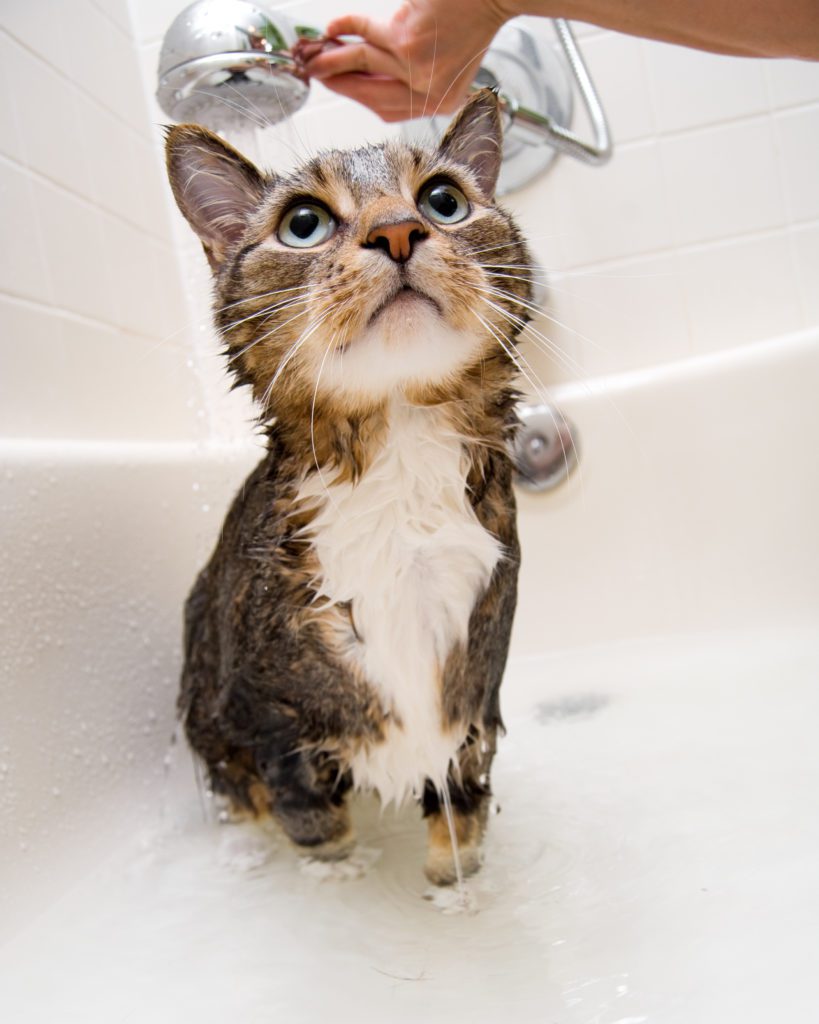
Bathing Your Cat – Yes, It Can Be Done!
Cats are well-known for their self-sufficiency– and major dislike of water! It’s no surprise, then, that they prefer to handle cleaning and grooming on their own. But when their curiosity gets the better of them and they come home sticky or stinky, they’ll need a dip in the suds. Bathing your cat can be a challenge; with these tips, though, you’ll be able to get the job done with minimal stress – or mess.
Bath Time! Play Time!
A tired kitty is more likely to be a mellow kitty, and that is a huge advantage during bath time. Before you plan on bathing him, take a few minutes to play. Use cat dancers, teaser wands, or even a piece of yarn to tire him out.
After you’ve played, give your cat a thorough brushing to remove loose dust and debris. It will make the bath faster and more efficient, so don’t skip this step! Usually, it’s an enjoyable experience for your cat, and it can help calm him.
Gather Your Supplies
You’ve managed to get your cat into the bathtub and poured or sprayed him with water. Whoops – where’s the shampoo? Where are the towels? Not the best time to go looking for supplies! Your cat will probably have limited tolerance for bathing, so make sure you’re prepared. You’ll need:
- A pitcher or bucket of warm water.
- Washcloth and a large towel.
- A bathtub, sink, or plastic container. (Kittens and small cats usually feel safer in smaller areas.)
- A washcloth, towel, or nonslip mat to place inside the container. (This gives your cat something to grip and reduces fear.)
- Shampoo.
- Treats.
- An assistant! Having an extra set of hands is not required – but it does make the bathing process much easier. One of you can hold and pet the cat, reassuring him, and the other can wash.
Time to Get Wet
Close the door to keep your cat from escaping. Yes, they’ve been known to do that at bath time! Hold your cat and speak in a soothing, gentle tone to keep him calm.
- Place your cat in the bathtub, sink, or container with his back to you to prevent scratching. If he his skittish, you may have to hold him by the scruff of his neck. (When done correctly, this stills your cat without hurting him.)
- Pour warm-lukewarm water over your cat until he’s completely wet.
- Gently work the shampoo into his fur, moving from tail to head. Don’t forget to lather up his belly, chest, and legs – but do not apply shampoo to his face.
- Rinse your cat until the soap is gone to avoid skin irritation.
- Use a clean, wet washcloth (no shampoo) to clean his face.
- Dry your cat with a large towel. Some cats tolerate a hair dryer on the lowest heat setting.
- Give your cat his favourite treat and lots of praise. This helps him associate bath time with pleasure – and may make the next time that much easier.
Even independent cats need a little grooming help now and then. Follow these tips and, remember, the key to effective bathing is to be calm – and quick!


